--24q Ford Vedette 49 (1950-1954)
Here are some details on one of my favorite Dinky, the number one of my top ten choice.
2 base plates : one with small and one with big letters.
4 colours : Mastic grey (with some variants of tints)
Metallic blue with red hubs
Green
and the uncommon one : Dark blue with red hubs
Kind regards
Here are the dark blue model and an another photo of the metallic blue which is for me the finest !
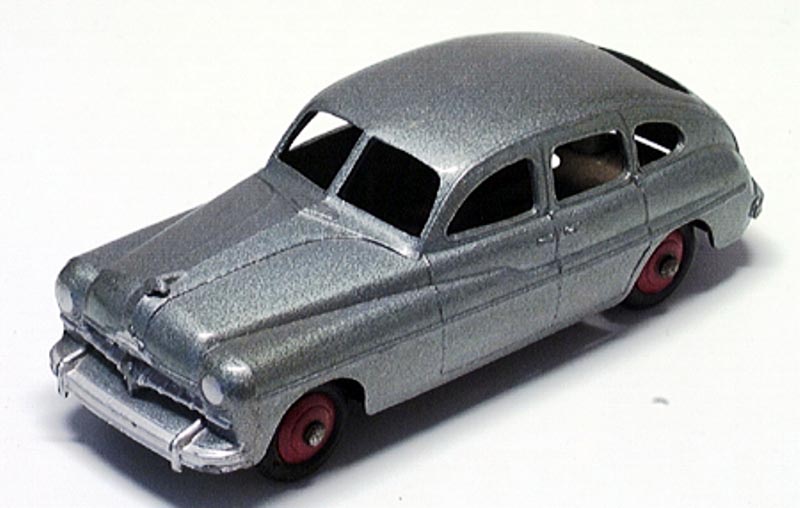

The dark blue
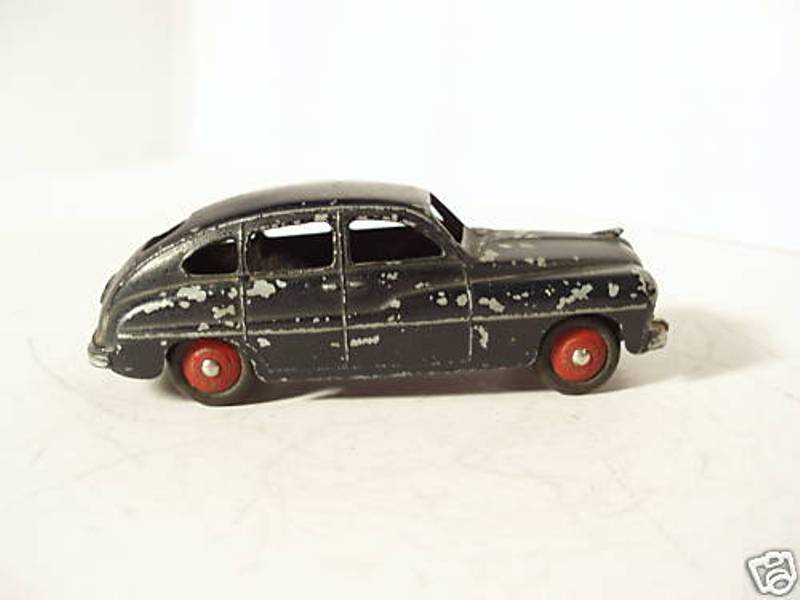
Those French Dinkies are certainly very nice, and I wish I had more of them! The metallic blue is very attractive, although the close-up shots seem to show that common problem of over-scale flakes (which still continues to affect some models today).
It seems Bobigny were ahead of Binns Road with their use of metallic paint - were there any British Dinkies with metallic paint (apart from silver) before the 1962 Cadillac 62 with its "polychromatic" finish?
It's interesting that this fastback was superceded by a "notchback" saloon version, as was the case with the similar-looking British Standard Vanguard. At least French Dinky modelled the new version - I don't think anyone has modelled a Vanguard Phase 2 in diecast.
The close-up shots was not made with my toy. My metallic blue has a very "clean" paint with no over-scale flakes.
Here under my two metallized light bue shade ! there is a big difference !
And now, the two different baseplates I have :
Here under my two metallized light bue shade ! there is a big difference !
And now, the two different baseplates I have :
Cheers
Richard
Richard--
That early Ford Vedette was always a favorite of mine, and when I was about 13, a good friend and fellow collector, who had just moved from Illinois to California, had the Vedette is that same, lighter shade of metallic blue with the red hubs. I always thought it was striking looking and wondered why they did not make more models using that color. They are fairly rare, but the French factory made several other models with that metallic blue, including the Chrysler New Yorker convertible.
I only have one 24Q Vedette and it is one that I bought through the U.S. distributor, H.Hudson Dobson, around 1959. It appears to be a later model as it has the larger lettering on the base. I think it is also interesting to note that this model did not feature some of the fine detail painting that later French models enjoyed, such as having the taillights painted, and the rear license area. An unusual feature of this model was the rear axle clip.......shared only with the English made fiirst version of the Standard Vanguard and the French Autocar Isobloc bus.
Regards,
Terry
Richard,
There must be three different base plates for the 1949 Vedette :
1) small letters with "DINKY TOYS" in inverted comas
2) small letters with "DINKY TOYS" without inverted commas
3) large letters with "DINKY TOYS" without inverted commas
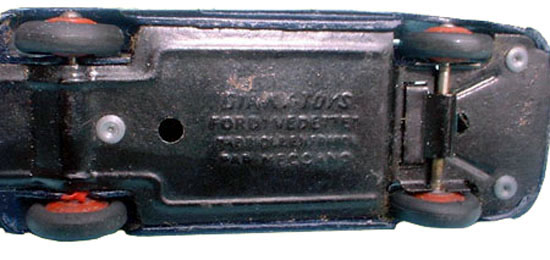
Unfortunately, the picture is not very good, too small and without the whole length of the model.
Now you must look out for this third variation.
Can you please post a large photo of the base plate of your Vedette with small letters and "DINKY TOYS" ?
Between the front rivet and the lettering there is hole in the baseplate, what was this put there for, or has it been added later for some reason?
Dave
David,
This hole and also one behind the rear axler are both present on the type 1 and 2 base plates with small lettering although we do not know which is the earliest.
1) small letters with "DINKY TOYS" in inverted comas
2) small letters with "DINKY TOYS" without inverted commas
3) large letters with "DINKY TOYS" without inverted commas
These holes may have been used for positioning the metal strip in the stamping tool. The front one has been deleted from the type 3 base plate.
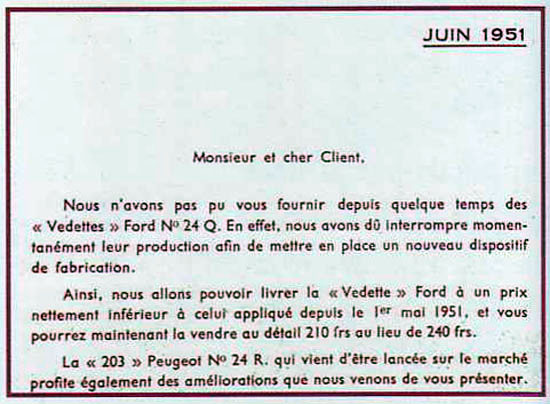
Which in English is :
Sir and dear client,
For some time, we heve not been able to provide the "Vedette" Ford No. 24Q. In fact, we have had to stop their production momentarely in order to install a new manufacturing device.
So we will be able to deliver the "Vedette" Ford at a much reduced price compared to that used since May 1951, and now you will be able to sale it for 210 frs. instead of 240 frs.
The Peugeot "203" No. 24 R Which has just been launched will also take advantage of the improvements that we have just described.
Contrary to what J.M. Roulet writes in his book of 2012 (page 134), Meccano's letter to the dealers (Collection Robert Goirand) does not state in any way that the important reduction in price of this model and the Peugeot 203 is due to the change of base plate. However, the letter states that it is the installation of a new manufacturing practice.
The price of the new base plate was exactly the same as the previous one, a cost reduction would have been possible by deleting the clip a la Vanguard used to attach the rear axle which has no apparent use.
Once more, J.M. Roulet indulges in wishful thinking and this without any clues, proofs or evidence.
P.S. I would be pleased if someone could put this post in good English for me.
Thanks.
Jacques.
Yes Jacques : 3 different base plates.
Here are my different Ford.
The two fawn ones have two different base plates.
Richard
A beauty in the nicest colour.
I just recently received a new Ford Vedette for my collection, and it was in light metallic blue shade. This shade of metallic blue seems somewhat lighter than the darker version, and also appears to have a more pronounced "metallic flake" in the paint. Not sure if this is a correct observation, but I seem to see more of the darker metallic blue. In any event, I now need to find a very nice dark metallic blue version, along with the light tan. For a very early 1950's model, I find this a very well done and executed model, along with its contemporaries...the Citroen 11BL and the Peugeot 203.
Best regards, Terry
Richard
Thanks for showing all of yours together and also your prized dark blue version.....those are not common at all. I have always really liked this early 24Q Ford Vedette, and the French factory did a remarkable job with the diecasting of it....a superb model!
Best regards, Terry
Here are my 3 Ford Vedettes 1949. The dark blue one has white tyres and the large lettering matte base plate. The light blue one has the small lettering shiny base plate and the green one has the large lettering shiny base plate.

3x Dinky Toys 24Q Ford Vedette 1949

3x Ford Vedette 1949. Top light blue - middle dark blue - under green
I added a photo of a Ford Vedette 1949 with Dutch license plate. He was in maintenance with my older brother who worked in the garage of my father. On the right is a Ford Fordor USA 1947 of my father with a Dutch provincial license plate. The letter A was for the province of Groningen, where I come from. It was around 1951 when the provincial license plates were replaced by national number plates. During the changeover there were 2 types of license plates.
Left Ford Vedette 1949 - right USA Ford Forder 1947

Ford Vedette Mk 1 Autosalon 1949

Ford Vedette autosalon.
In Amsterdam was a Ford Factory were round 1949 3000 Ford Vedettes were assembled. Good for employment in Amsterdam.

Ford factory Amsterdam 1949. 3rd left Ford Vedette 1949.

Pillar Ford Amsterdam 1949 with 2 Ford Vedettes 1949.

Dutch Advertisement Ford Vedette 1949 assembled in Amsterdam.
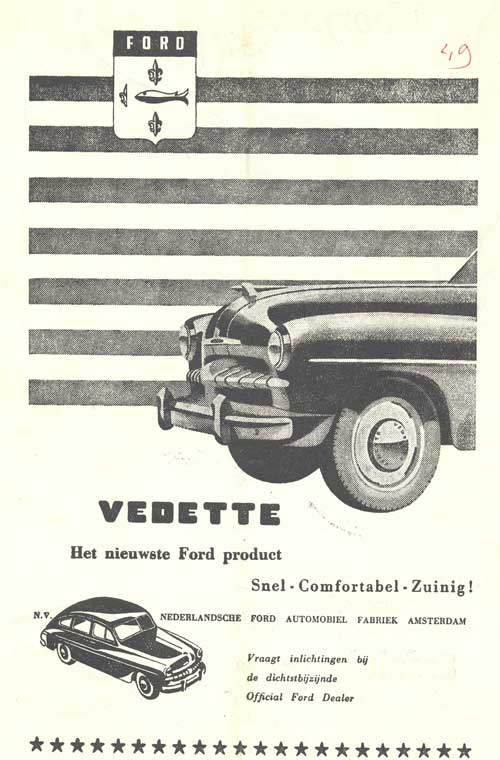
Dutch advertisement Ford Vedette 1949.
Jan Oldenhuis, 16-1-2018.
Very complete documents Jan and very nice photos of this superb Ford.
Unfortunately, your dark blue model is a repainted item.
The dark blue Ford had always a small lettering baseplate and the tyres were always black, stamped "M"
Anyway, it seems that the colour is very closed of the original and it's nice to have the three variations.
Kind regards
Richard
Oops, I did not expect that, but Richard, thank you for your clarification. Let that be clear. This kind of information must simply be able to said. So I have bad luck with 2 purchases. This is the second model within a week, of which I have learned that they are not original. I could have known it of the Rover 75 with its strange rivets. That is my own stupid fault, but I did not expect this of the blue Ford Vedette. I have 2 books from JM Roulet, a Dutch and a French one, but I did not read this well. Both purchases are unfortunately too long ago to be able to complain via Paypal so I have to accept this. I hope on better purchases.
Kind regards,
Jan Oldenhuis, 16-1-2018
Jan—- As always, thanks for all the great photos and information on this early Vedette. I first saw the Dinky model around 1958, when a good friend and young collector had a metallic blue one, and I instantly developed a liking for it. For the early 1950’s era, the French factory did a great job with that casting....very accurate and very nice lines and features.
Best regards, Terry
Jan, incidents like this happen to everyone. I believe (hope?) my collection is now 100% free of such unvoluntary fakes. It is not always deliberately done by the seller and beware of 'too good to be true' models, especially in relation to the price asked or bid. It is not easy to get rid of mistakes like this. I sold all unwanted, accidental repaints/restorations in the course of the years. But if you bought such an item too expensive, you will have to accept the financial loss when selling it - telling the new buyer honestly that the model is not (fully) authentic. Kind regards, Jan
Jan—Well said! Unfortunately, buying Dinky Toys via the internet means you cannot personally hold or inspect the model, so one has to rely on the photos and the reputation of the seller....which isn’t always well known. For me, I really want several, very good closeup photos, in good light. And I tend to focus on 2 main issues, that really standout as far as re-finishing: (1). The rivets, to be sure they have not been replaced, and (2). The silver detailing....to me, this is a dead giveaway and pretty easy to spot. Almost all of the factory silver was applied via spraying and using a mask. Thus, no brushstrokes and a very even and smooth application. Plus, the silver paint that Meccano used was not super bright.....most of the silver paint I see today is more chrome like.....too bright to be authentic. Coverage of the silver is also an issue. Many times, restorers overpaint the bumper areas, applying paint to areas Dinky did not. And of course, look carefully at super detailing.....door handles, etc., that have been painted. We all have to be very careful and diligent!
Best regards, Terry
Jan O, thanks for the pictures and sorry about the dark blue Vedette.
The line up of Fords outside the Ford Automobiel Fabriek is interesting. Were the Anglia and Prefect on the left end also made in Holland, or were they imports? It looks like they are both right-hand drive so I'm guessing imports. Were they offered at the same time and do you know how popular they were?
My second car was that model of Prefect, basically a pre-war car.
Regards
John
Hi John. The Anglia and the Prefect with the steering wheel on the left were made in Amsterdam as far as I can tell.
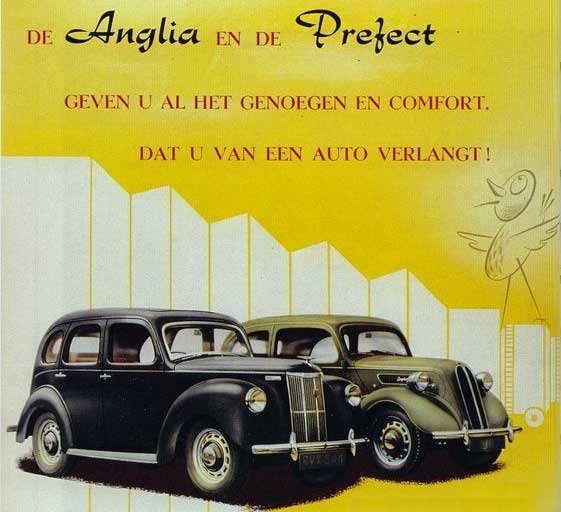
Dutch advertisement of the very early Anglia and Prefect
From 1945 to 1964 German, English and sporadic American Fords were assembled in Amsterdam for the Dutch market, including the Ford Anglia, the Ford Corsair, the Ford Cortina and the Ford Taunus.
The car brands after WWII were diverse in the region where I come from (Groningen - Northern Netherlands). It depended on the presence of Auto dealers. In the 50's the Ford Anglia, Consul, Zephyr, Zodiac and Cortina were popular.
My father had always Fords: USA Ford Forder 1947, Ford Zephyr Six, Ford Zodiac and Ford Anglia 105E.
9 km from my birthplace Bierum was in Appingedam a Ford dealer Dinkla.

Ford dealer Hero E. Dinkla ca 1925 Appingedam
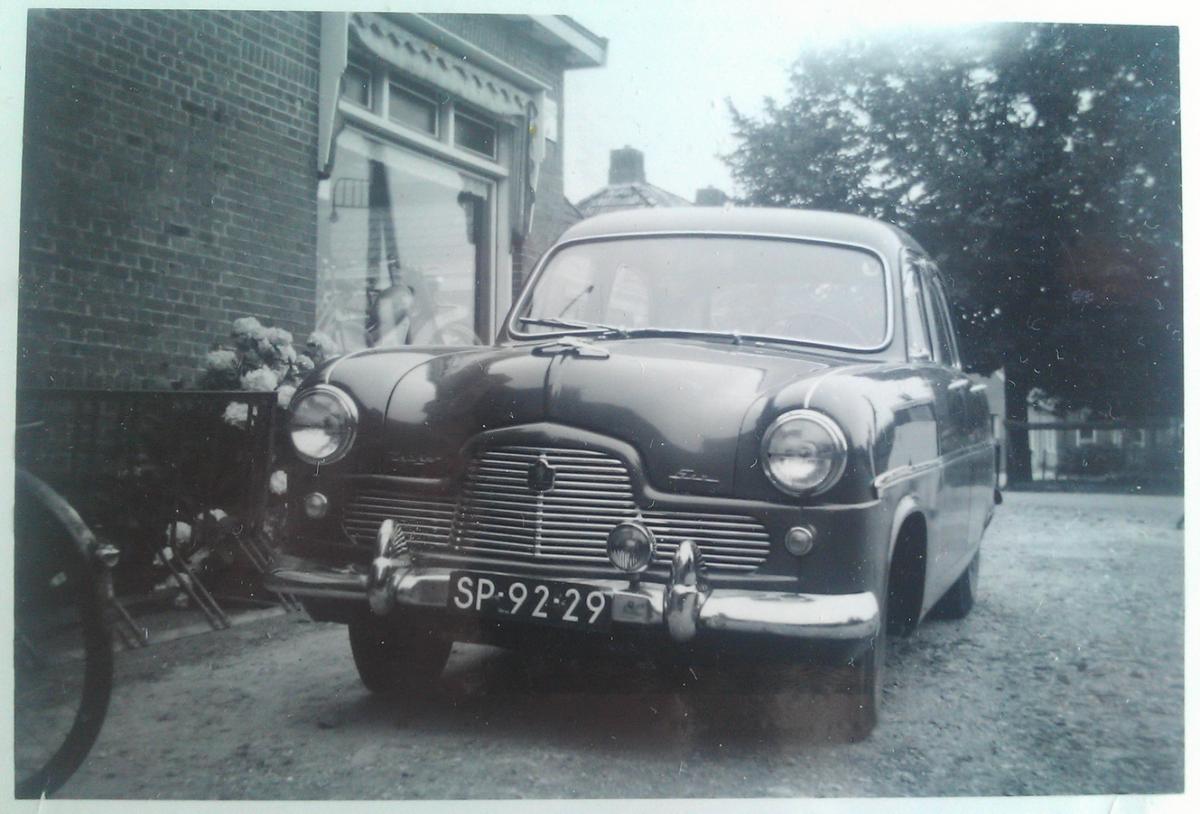
Ford Zephyr Six of my father.

Dutch assembled Ford Anglia 105E to Auto Rai 1963 Amsterdam
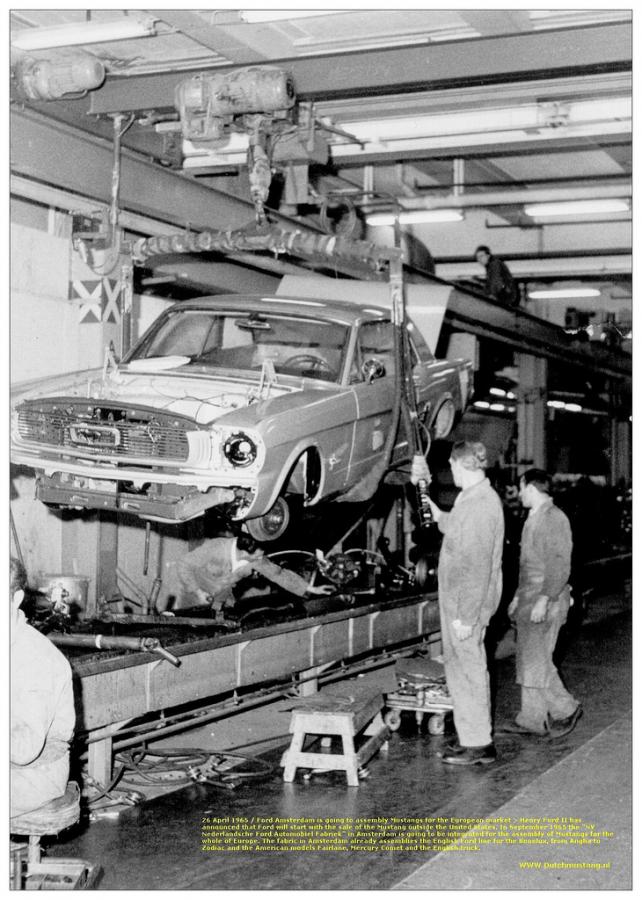
Ford Amsterdam is proud that Holland has been chosen to undertake the assembly of the Mustang for the European Market in the plant Amsterdam. 26 April 1965.

Ford Mustang assembling in Ford factory Amsterdam.
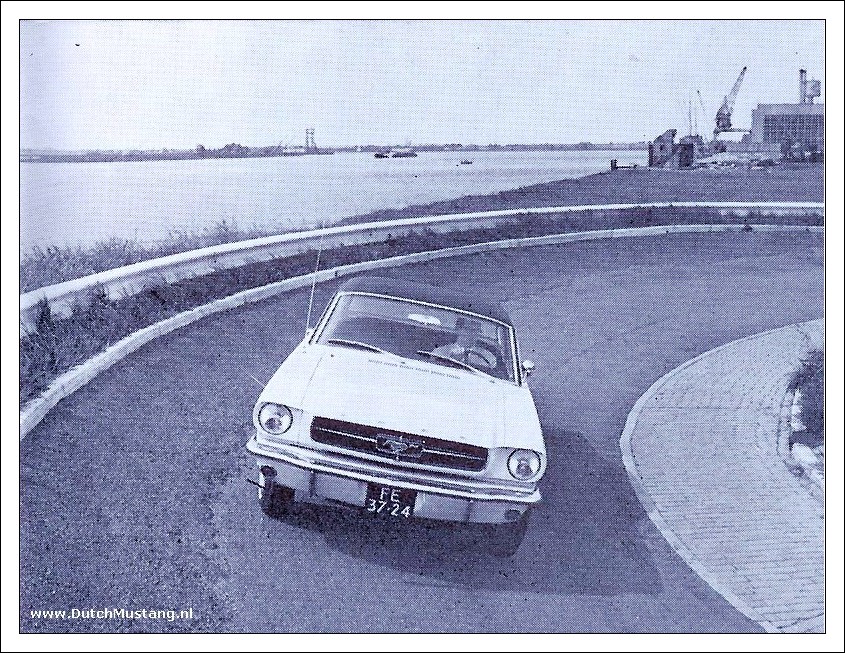
Ford Mustang on the test track Amsterdam -1966
Ford dealer Dinkla was also dealer of tractors and there were many farmers in my region. The Ford tractors also played an important role in the agricultural mechanization and the labor of horses and workers were replaced by machines.
Kind regards,
Jan Oldenhuis, 18-1-2018
Jan O, that's a very comprehensive reply to my query and I thank you.
I was prompted to ask by the juxtaposition of the old-fashioned British Fords with the much more modern looking Vedette. After the war we in the UK were desperate for foreign exchange and our motor industries were very much geared to export but I couldn't help thinking how old-fashioned the Anglia and Prefect looked by comparison to the sleek-looking French car.
Regards
John
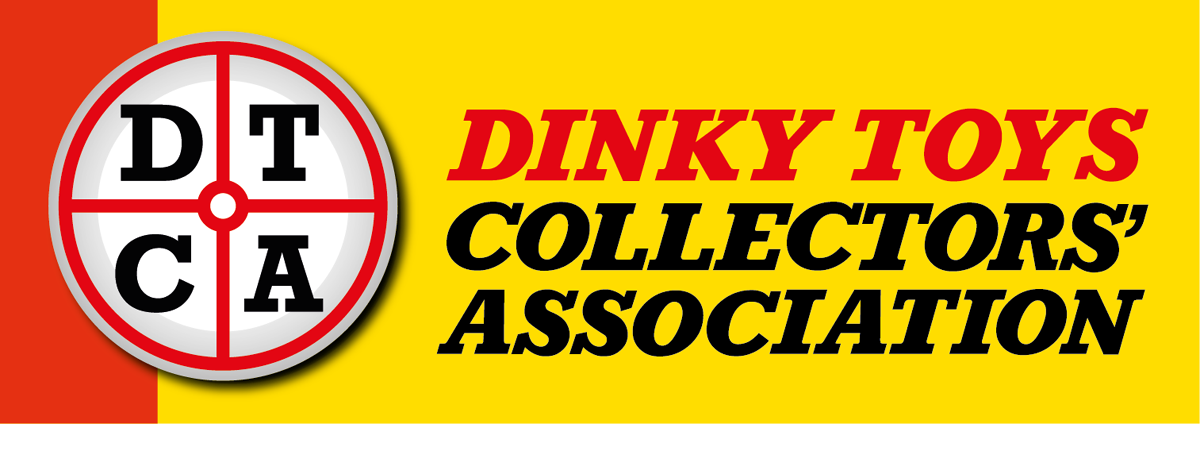

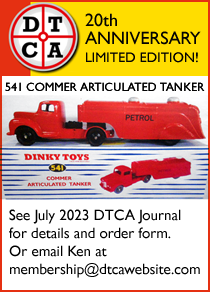
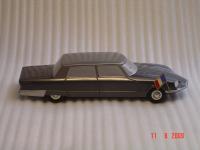
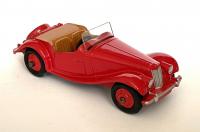
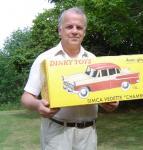


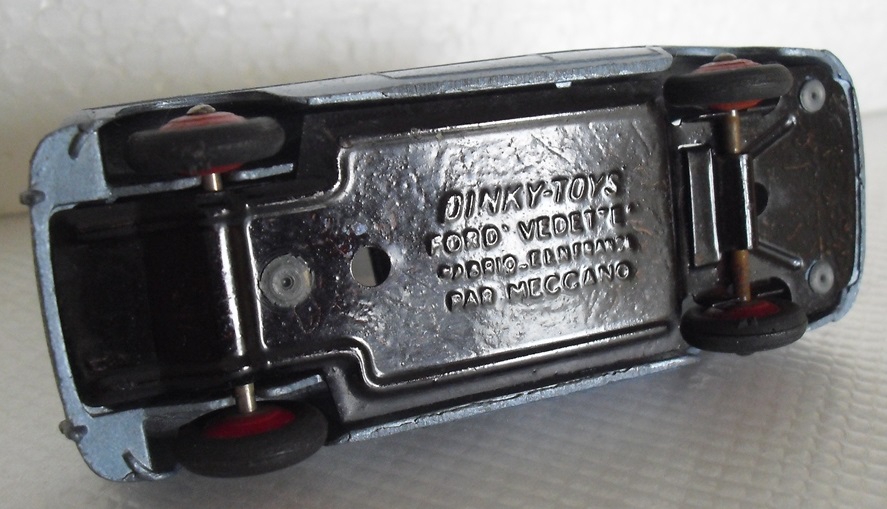


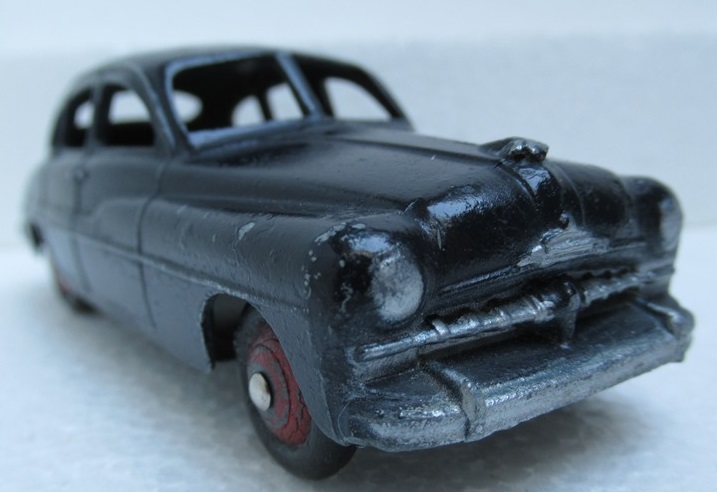


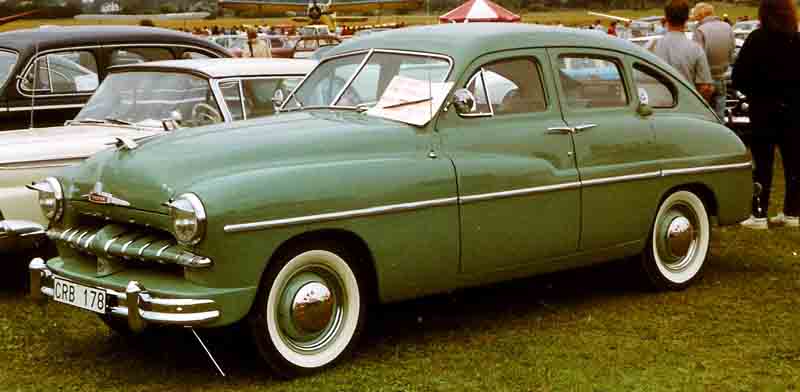



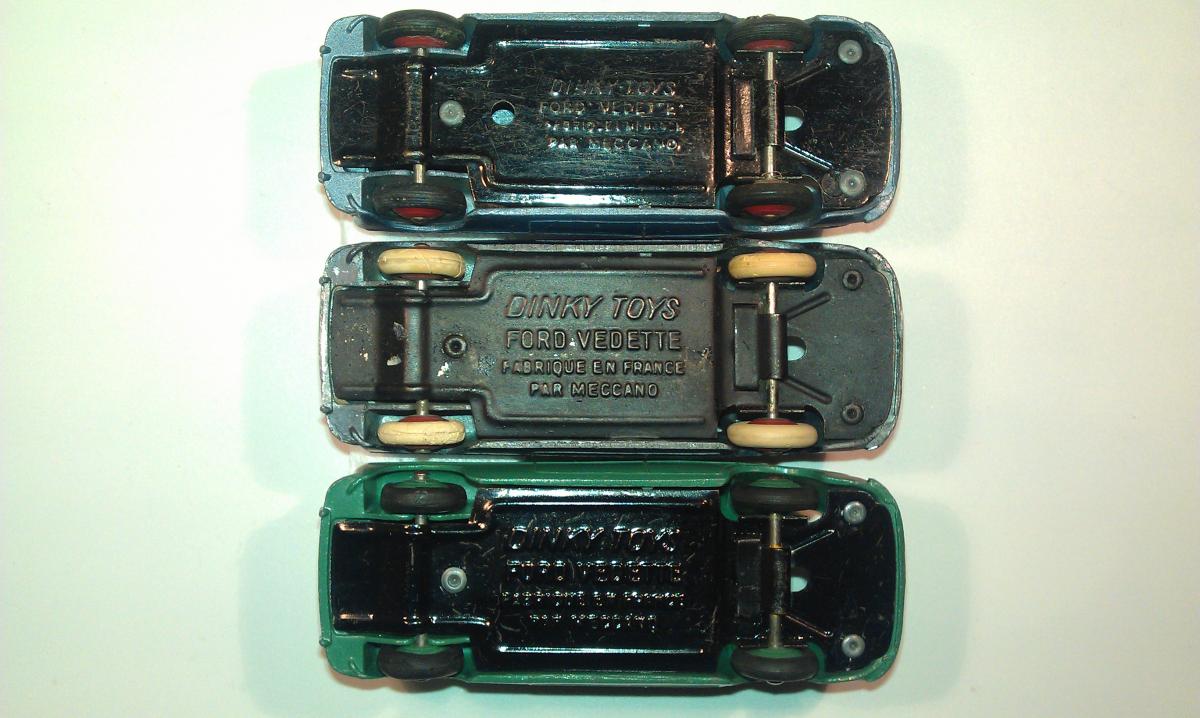
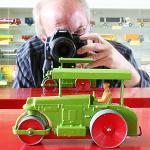

-073 Land Rover, Horse Box and Horse (1960-67)
DTCAwebsite upgrade 2023
DTCAwebsite upgrade 2023
-105c and 383 4-Wheel Hand Truck (1949-1958)
-105c and 383 4-Wheel Hand Truck (1949-1958)
DTCAwebsite upgrade 2023
DTCAwebsite upgrade 2023
DTCAwebsite upgrade 2023
DTCAwebsite upgrade 2023
DTCAwebsite upgrade 2023
DTCAwebsite upgrade 2023
DTCAwebsite upgrade 2023
DTCAwebsite upgrade 2023
DTCAwebsite upgrade 2023
DTCAwebsite upgrade 2023
DTCAwebsite upgrade 2023
DTCAwebsite upgrade 2023
DTCAwebsite upgrade 2023
--22c Motor Truck (1933-50)
--22c Motor Truck (1933-50)
DTCAwebsite upgrade 2023
DTCAwebsite upgrade 2023
Trailer Caravans
Trailer Caravans
DTCAwebsite upgrade 2023
DTCAwebsite upgrade 2023
DTCAwebsite upgrade 2023
DTCAwebsite upgrade 2023
Trailer Caravans
Trailer Caravans
-138 Hillman Imp (1963-73)
-537 Renault 16 TL
-189 Triumph Herald Saloon (1959-64)
-255 Mersey Tunnel Police Van (1955-61)
DTCAwebsite upgrade 2023